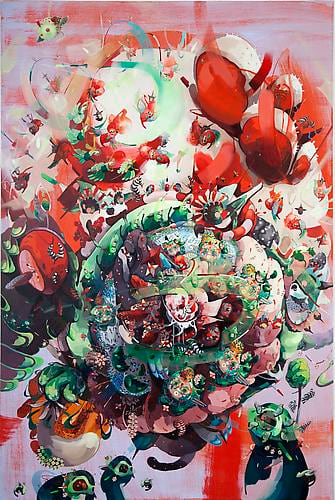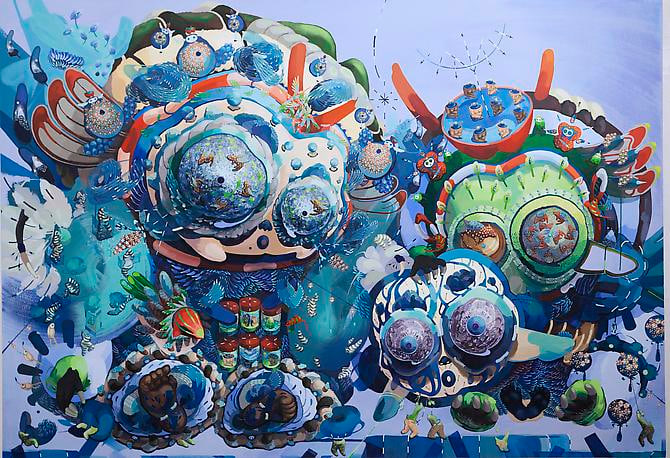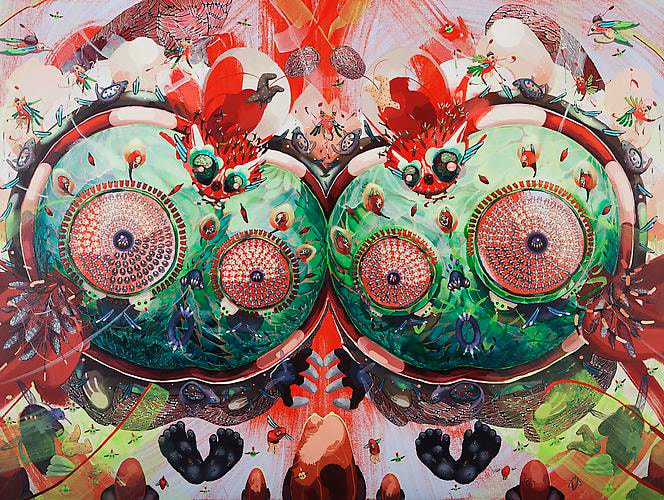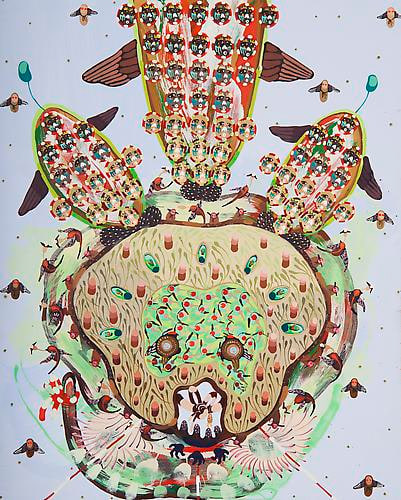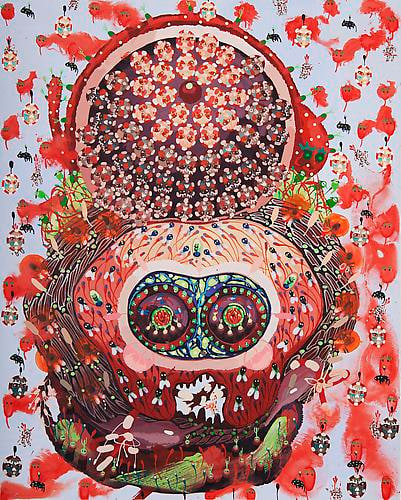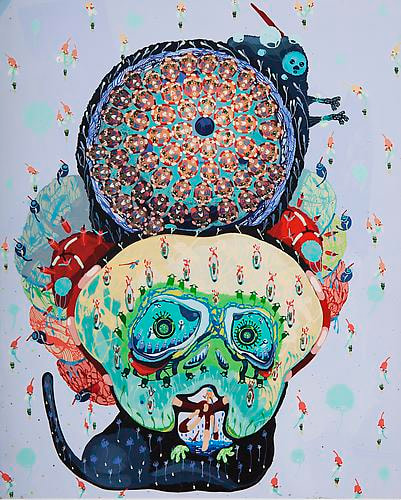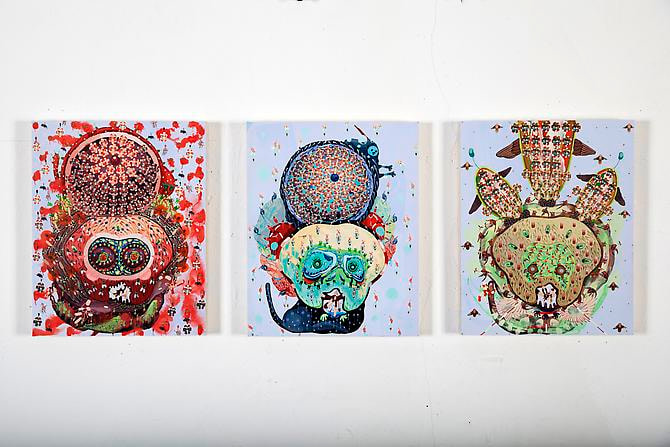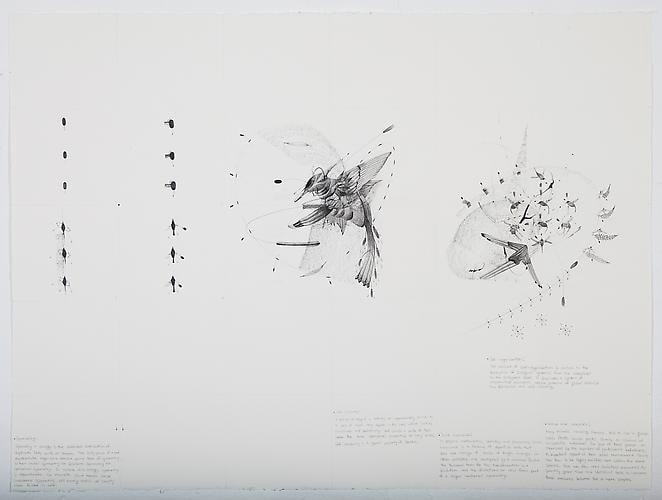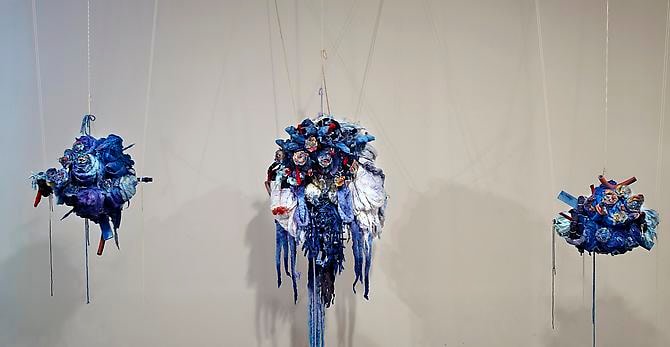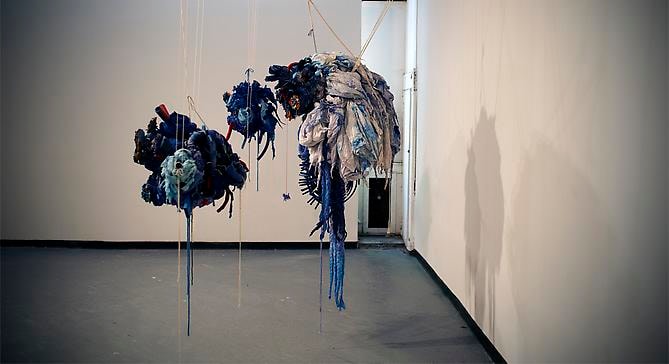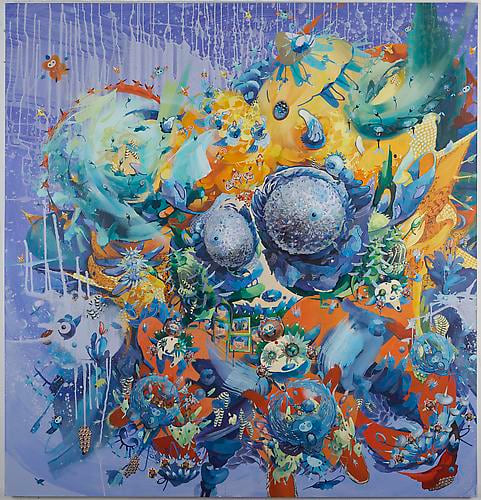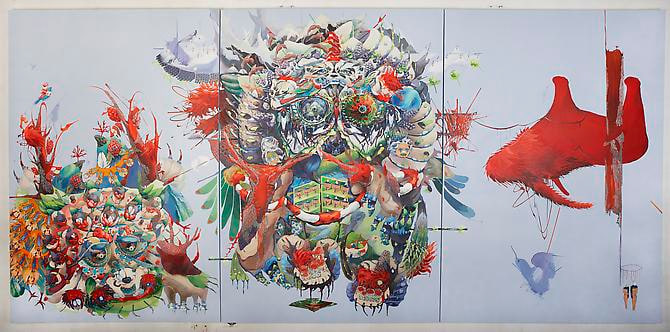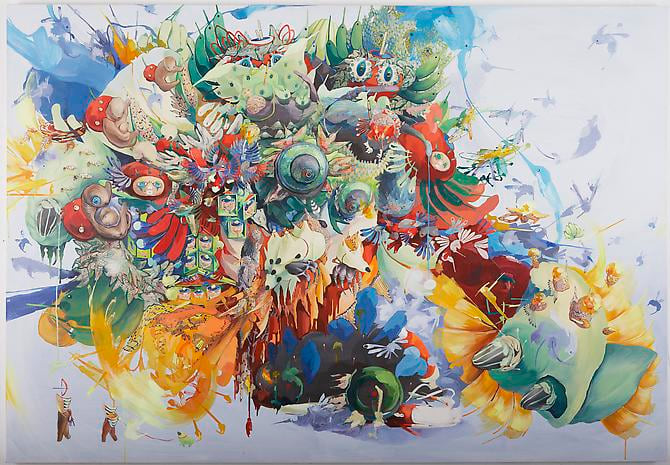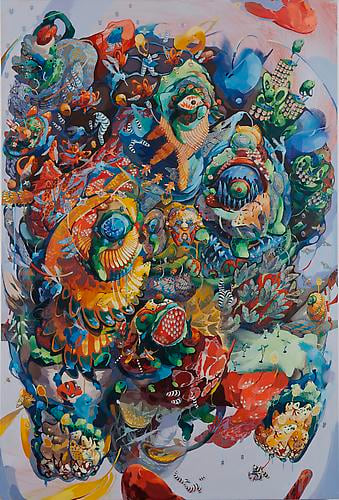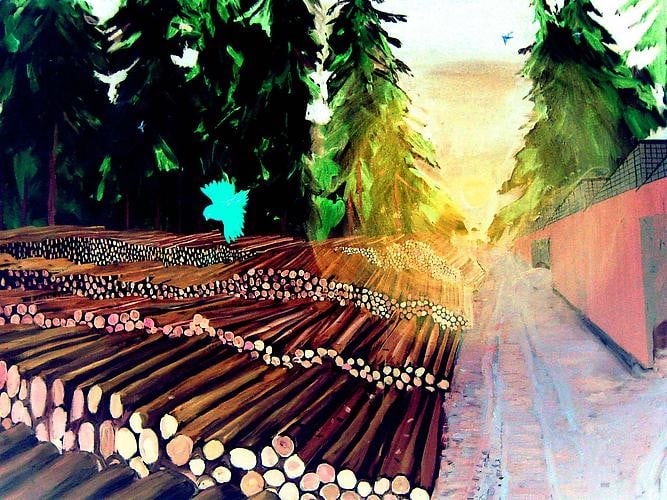FOR IMMEDIATE RELEASE:
MI JU - GAIA: new painting and sculpture @ FREIGHT+VOLUME, Sept 22nd – Nov 3rd, 2012
In the video room: Ezra Johnson, The Time of Tall Statues
Nature is an infinite sphere of which the center is everywhere and the circumference is nowhere. -Blaise Pascal
Symbolism – in art as in life – has always played a dual role. In the context of fantasy or dream, symbols provide a means of detachment, of escape or refuge, from civilization and the harshness of reality. At the same time, symbols are a way of making sense of that reality, by simplifying and sorting through turmoil and chaos. The Symbolist movement in painting was associated initially with artists such as Moreau, Klimt, Gauguin, Redon, Munch, and Ensor, later explored by Picasso, Klee, Chagall, Kahlo, Graves, Dove, Burchfield and Beuys, and influenced generations of European and American expressionist and abstract artists on through the present. Although widely different in technique and execution, symbolists utilized a kind of code to provide a means of escape from the material world, as well as a safe harbor to express complex emotions in the midst of the horrors of war.
In the case of Mi Ju, a young, very gifted painter from South Korea, symbolism is imbedded in mythological dream and fantasy as a means to interpret her upbringing in - and emigration from – a divided country. She connects her past and her present via a blend of traditional Korean motif and myth, along with current political and personal subject matter. Born in South Korea, her father ran a textile factory and mother was a florist for a Buddhist temple. Massive rolls of fabric were always around her during her childhood, their colorful patterns and diverse textures affecting her visual expression. The intricate natural ornaments and bizarre creatures filling Buddhist temples also fed the artist’s imagination. She writes,
Studying in Australia, San Francisco, and New York has given me insight into the various perspectives people have about nature. Native American totem poles, Aboriginal topographical art, and the complexity of psychedelic art all influence my artistic process. I look to scientific theories on the origin of life, emergence patterns, and swarm behavior to introduce more intricacy and narrative into my work.
The exhibition’s title Gaia refers to the Greek earth mother goddess as well as the scientific Gaia Principle, proposing that "all organisms and their inorganic surroundings on Earth are closely integrated to form a single and self-regulating complex system, to maintain the conditions for life on our planet" (James Lovelock). Mi explores the significance of Gaia pictorially, as it relates to today’s ecological challenges. In works such as One -as well as Wind and Water–the artist celebrates and pays homage to the elements in all their glory by examining both microcosms and macrocosms in nature. Mi deconstructs space in the manner of classic Asian landscape painting to present a floating menagerie of symbols – disembodied lanterns, birds, insects, dragons and other hybrid creatures, rich organic matter – looming up from the primordial void. Mi also employs radical shifts in scale and density, subtle hues juxtaposed with jarring color, fluctuating perspective and other dramatic methods to convey her otherworldly vision. Negative space is addressed lovingly and carefully, with as much and perhaps more import than actual objects.
I perceive nature as flat, crowded, and infinite. Often times, the world is too large to comprehend, too crowded to find a focus. Countless living organisms are packed layer by layer, interconnected with each other. My compositions develop from the contemplation of opposing concepts: ephemeral and eternal, uncensored and restrained, improvised and strategic. The work often combines both cuteness and violence. By understanding natural elements from micro to macro, fractals to flocks, and ants to people, I reflect mixed perceptions of nature through my work. Nature could be seen as controllable, appealing, and delightful, yet from a different perspective, natural elements can become overwhelming and destructive.
Born in South Korea, Mi received her BFA in painting and drawing at Yeungnam University and the San Francisco Art Institute. Later Mi went on to earn her MFA in painting and drawing at the Pratt Institute in Brooklyn. She has shown in group and solo exhibitions in Seoul, San Francisco, San Diego, Copenhagen and New York. Her work was recently acquired by the Fredrick R. Weisman Foundation of Los Angeles. Mi currently lives and works in Brooklyn.
Concurrently in the video room we are pleased to present another view of symbolism imbedded in ecological challenge: Ezra Johnson’s The Time of Tall Statues 2007-2009, dur. 14 minutes. This moody, nonlinear, colorful and poetic painted animation is set in the quiet woods of a fictional timber town, invaded by anxieties about loss on both personal and societal levels. Inspired by the question: Is it a film about painting or a painting about film? The artist states,
I am trying to make dreams real. Not just through imagery but also through different kinds of connectivity and by the transitions between images. I want to plow through space in a physical way; pushing forward into it with tactile energy. I want to go mucking from side to side with gooey, soupy paint or chunks of cut paper and objects. I like to make it physical so the viewer can feel it in a visceral way- not slick or heavily produced.
Ezra Johnson, born 1975 in Wenatchee, WA, received his MFA in painting from Hunter College in NYC in 2006. He work has been exhibited at the Hammer Museum in LA, Site Santa Fe and the ICA in Philadelphia. This is his second video project at F+V.
Please join us for a reception with the artists on Thursday, Sept 27th from 6-8pm. For more information please contact Nick Lawrence @ 212-691-7700 or nick@freightandvolume.com.

